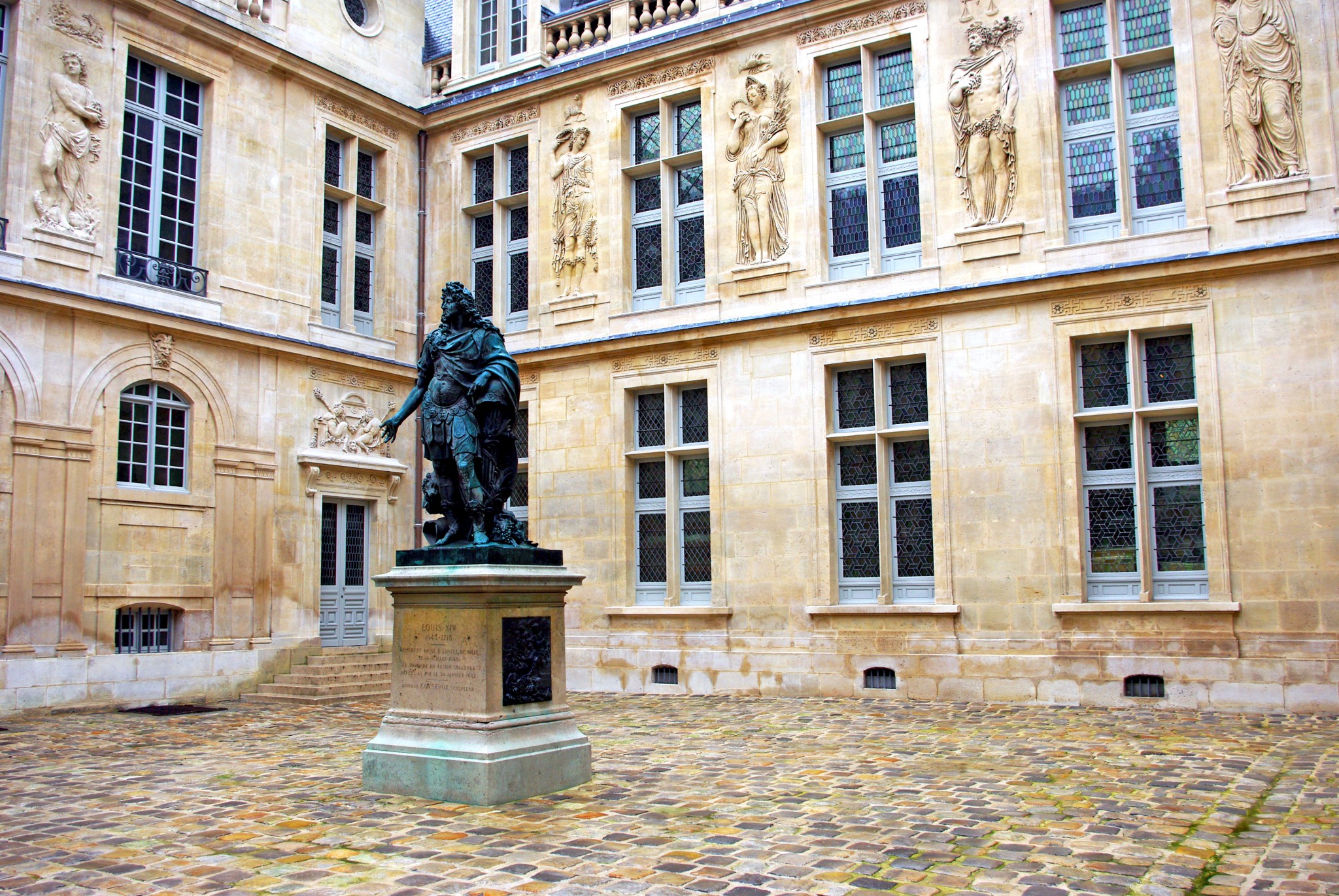The fine Hôtel Carnavalet is a mansion from the 17th century is located at the corner of Rue des Francs Bourgeois and Rue de Sévigné in the Marais district, Paris.
The Marais district houses a museum dedicated to the history of Paris. Its beautiful formal garden courts offer a peaceful shelter in the bustling historic neighbourhood of Marais.

The Carnavalet Mansion
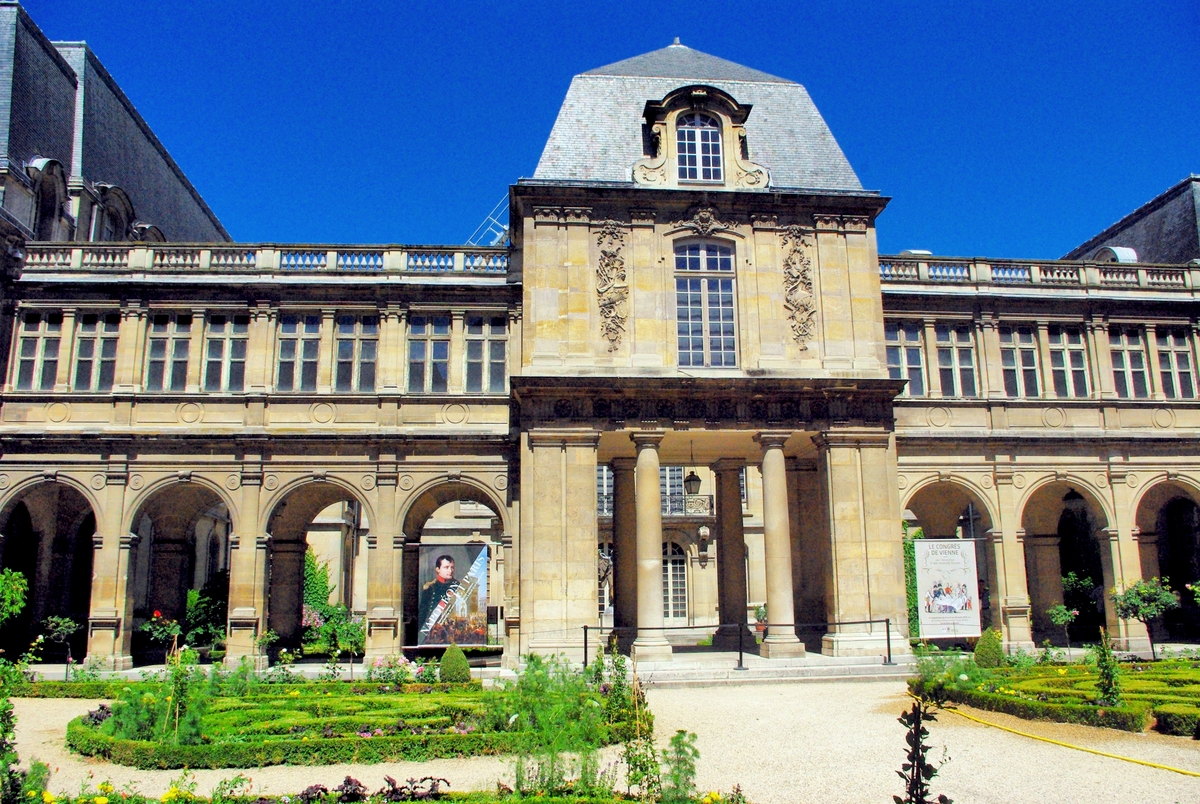
The Carnavalet mansion was built as a town house in 1548 for Jacques des Ligneris, then President of the Paris Parliament. Its current name derives from Madame de Kernevenoy of Brittany who owned it in 1578. As one of the Marais’ oldest mansions, the mansion was radically transformed by François Mansart in 1655 to its present appearance. Alongside the Cour Carrée of the Louvre, the Carnavalet mansion is one of the rare examples of Renaissance architecture in Paris.
Marie de Rabutin, the famous Madame de Sévigné, known for her letter-writing, lived in the Carnavalet Mansion from 1677 until her death in 1696.
The statue of Louis XIV greeting the visitors in the courtyard of the museum is the only surviving royal statue in Paris from before the French Revolution.
The garden courts of the mansion are particularly peaceful in the summer with its exquisite flower beds and roses.

A few architectural elements saved from demolition during the Haussmann urban redevelopment of Paris in the 19th century were used to extend the museum around the gardens: the Pavillon des Marchands Drapiers (Merchant Drapers’ house, 1660), and the central block of Hôtel de Choiseul. The access to the gardens from Rue des Francs Bourgeois is landmarked by the Nazareth Arch, a Renaissance structure coming from the Île de la Cité. The Paris Coat of Arms can be seen on the railing under the semicircular arch: “Fluctuat nec mergitur” a Latin phrase meaning “It floats and doesn’t sink”.
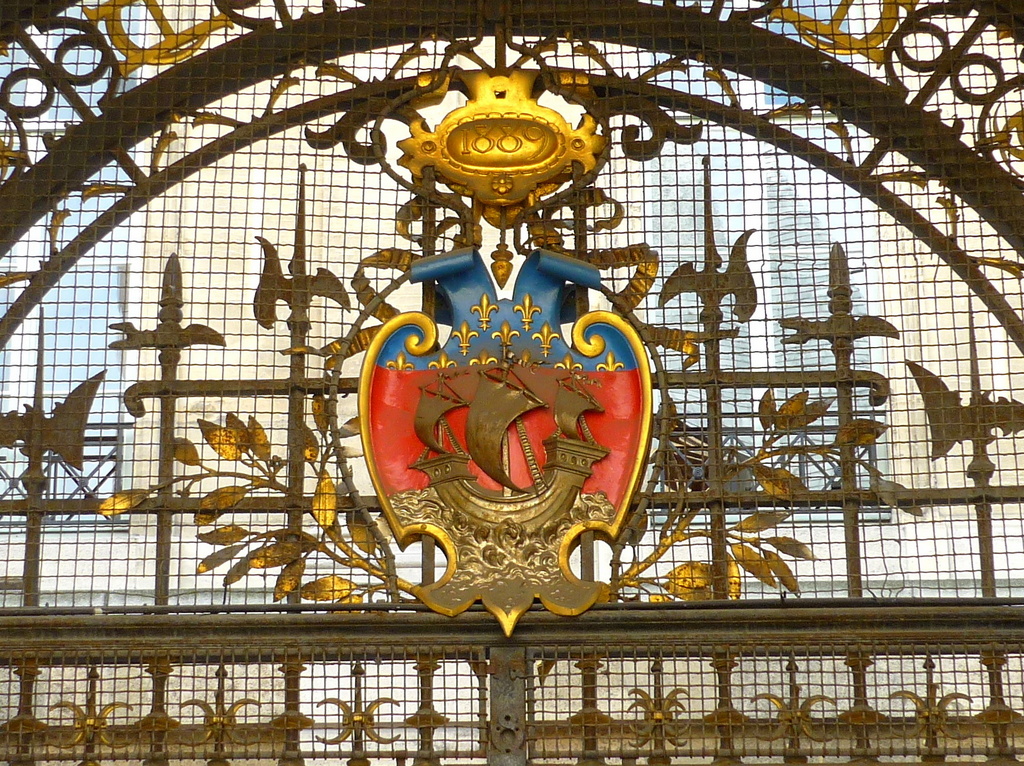
The Statue of Victory is the original version of the statue which crowns the Châtelet column.
The Carnavalet Museum
Bought by the municipality of Paris in 1866 along with the neighbouring mansion of Le Peletier de Saint-Fargeau, the Carnavalet became a museum dedicated to the history of Paris.
Inside the two adjoining mansions are superb rooms still decorated with panelling, furniture as well as paintings and sculptures. The museum exhibits the historic collection of Paris.
The Carnavalet museum shows the evolution of Paris, from the village of Lutetia (Lutèce) to today’s great city of more than 2 millions inhabitants, including the Middle-Ages, the Renaissance, the Age of Enlightenment, the French Revolution and the 19th century.
The rich museum contains about 2,600 paintings, 20,000 drawings, 300,000 engravings and 150,000 photographs, 2,000 modern sculptures and 800 pieces of furniture, thousands of ceramics, many decorations, models and reliefs, signs, thousands of coins, countless items, many of them souvenirs of famous characters, and thousands of archeological fragments.
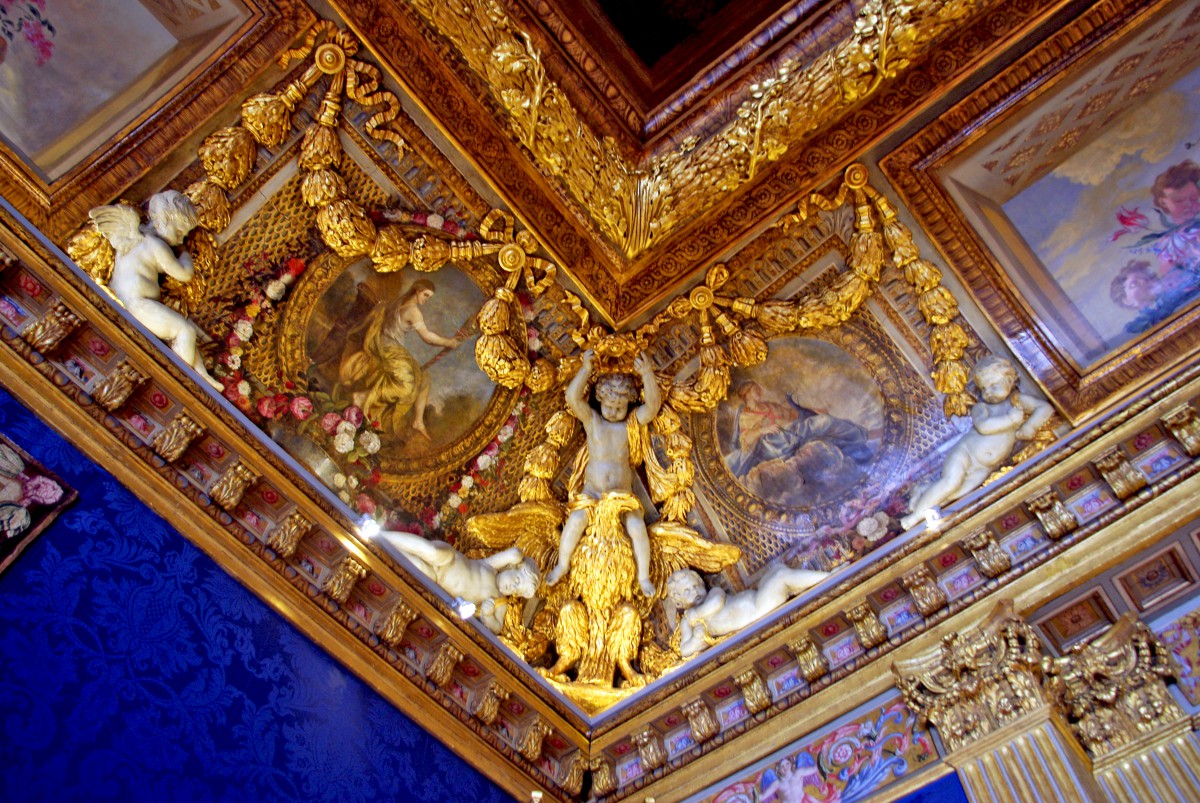
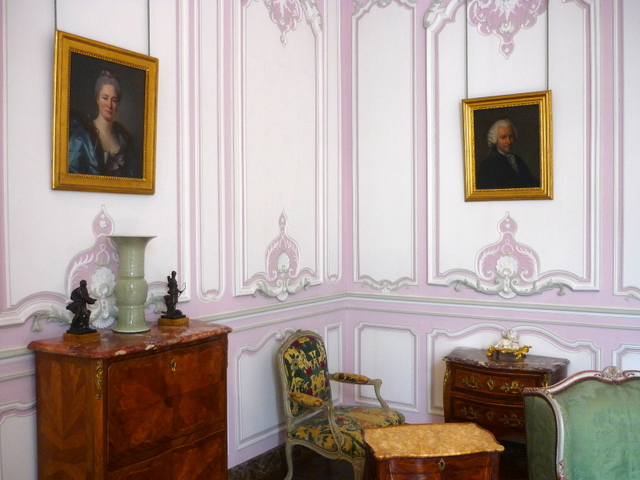
Visit the official website of Musée Carnavalet: http://www.carnavalet.paris.fr
The museum is opened from Tuesday to Sunday 10am-6pm and closed on Monday and Public Holidays. Entrance is free.
The museum will reopened in Spring 2020 after a 4 year renovation.

